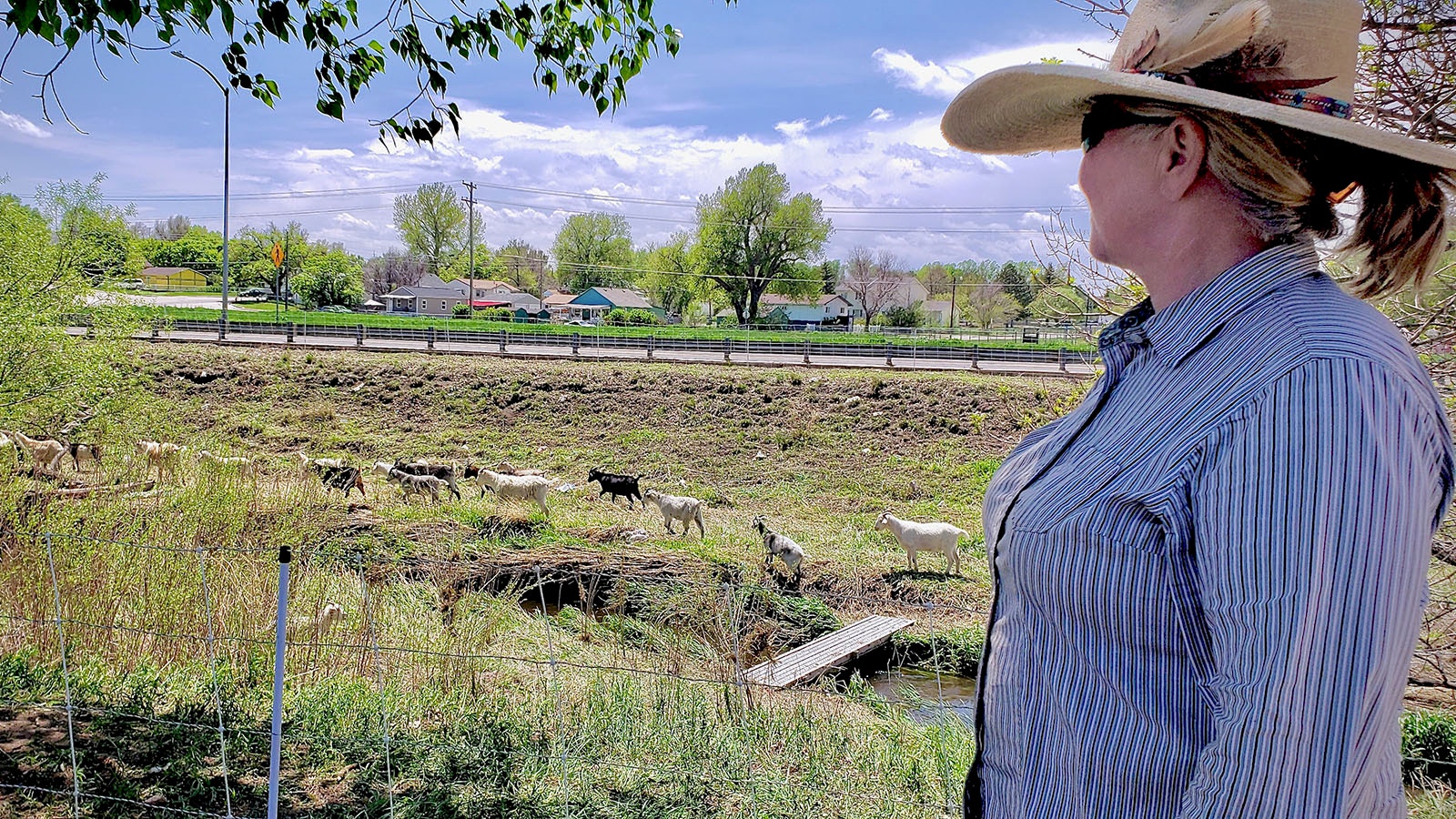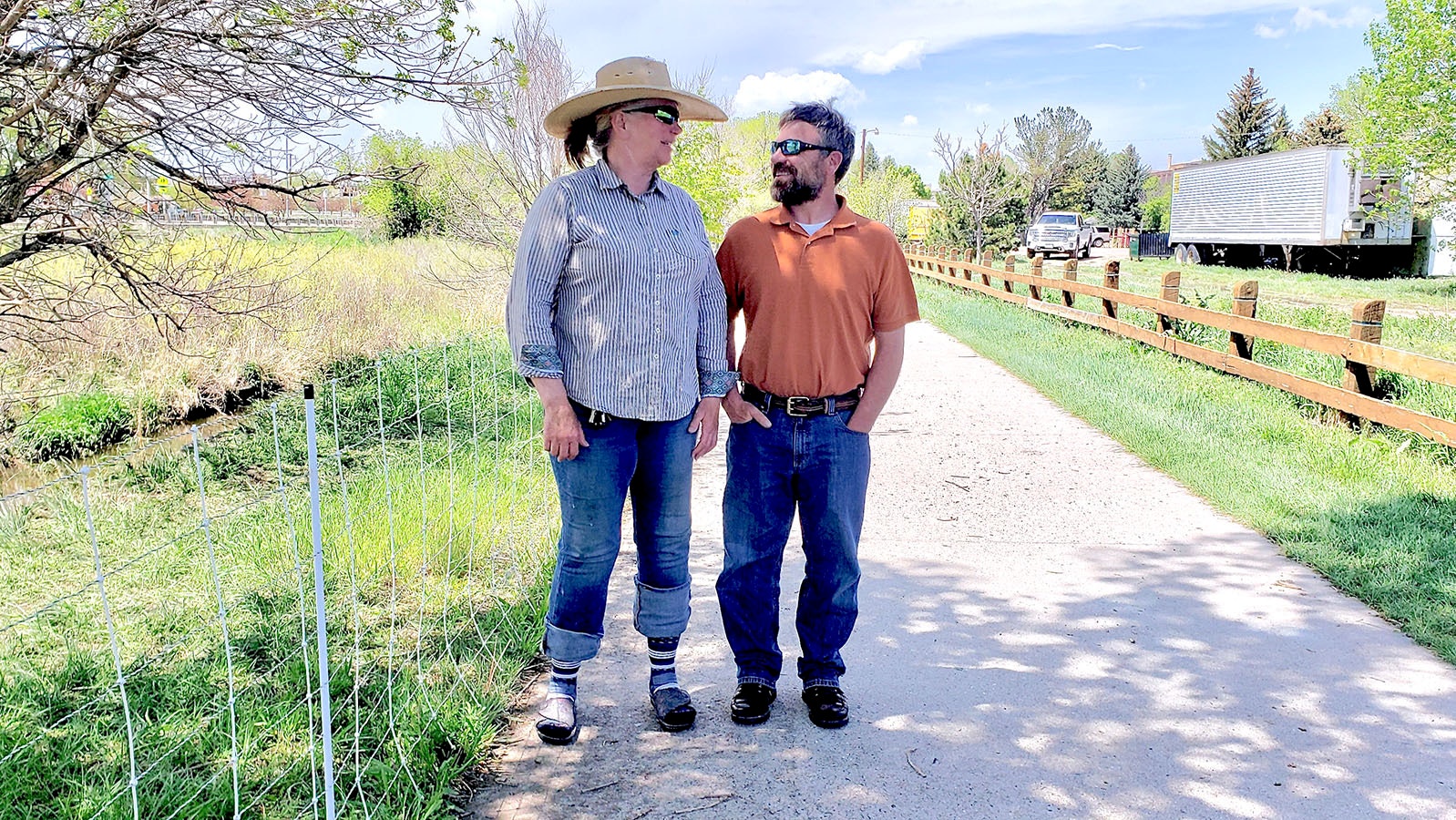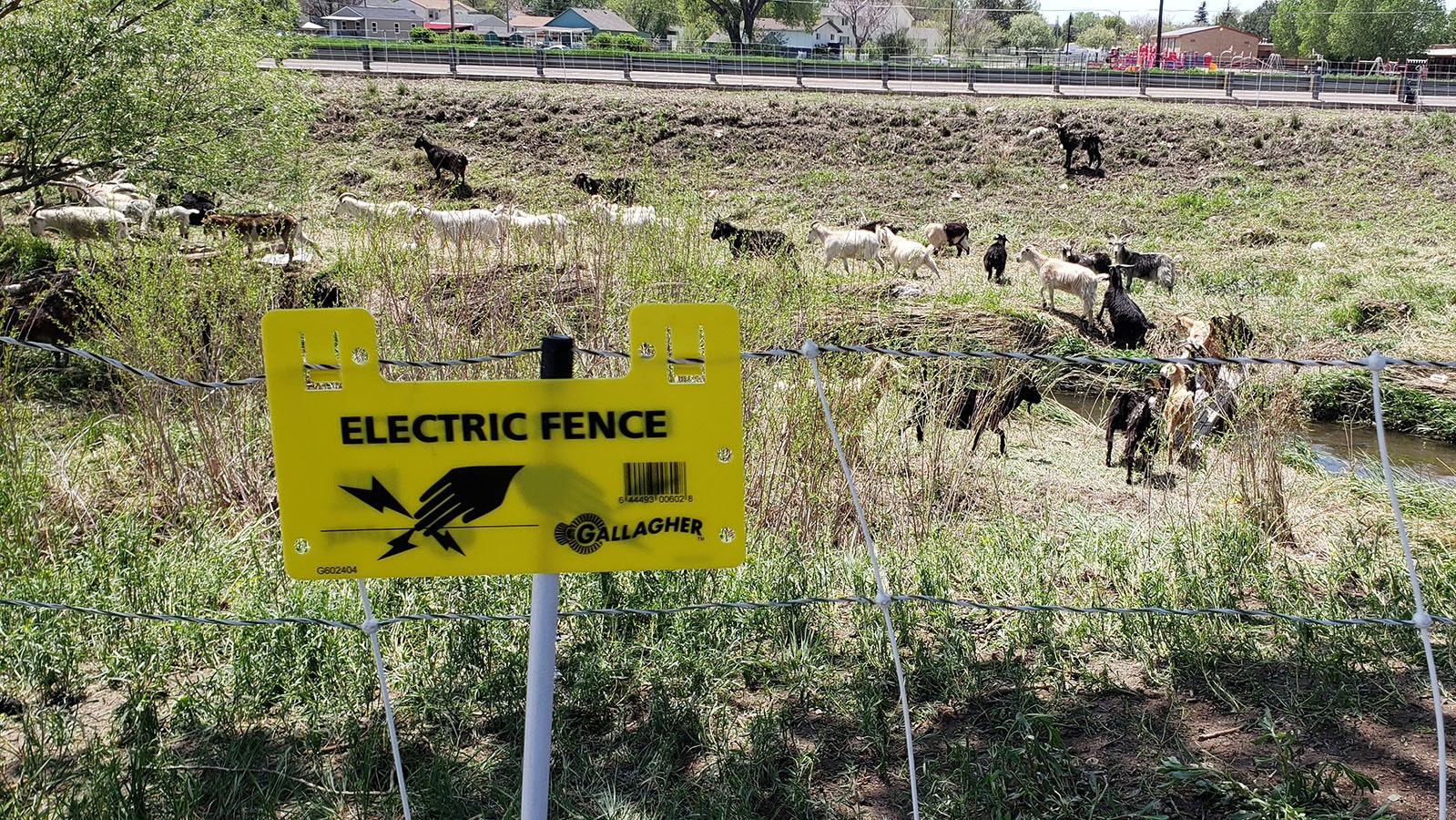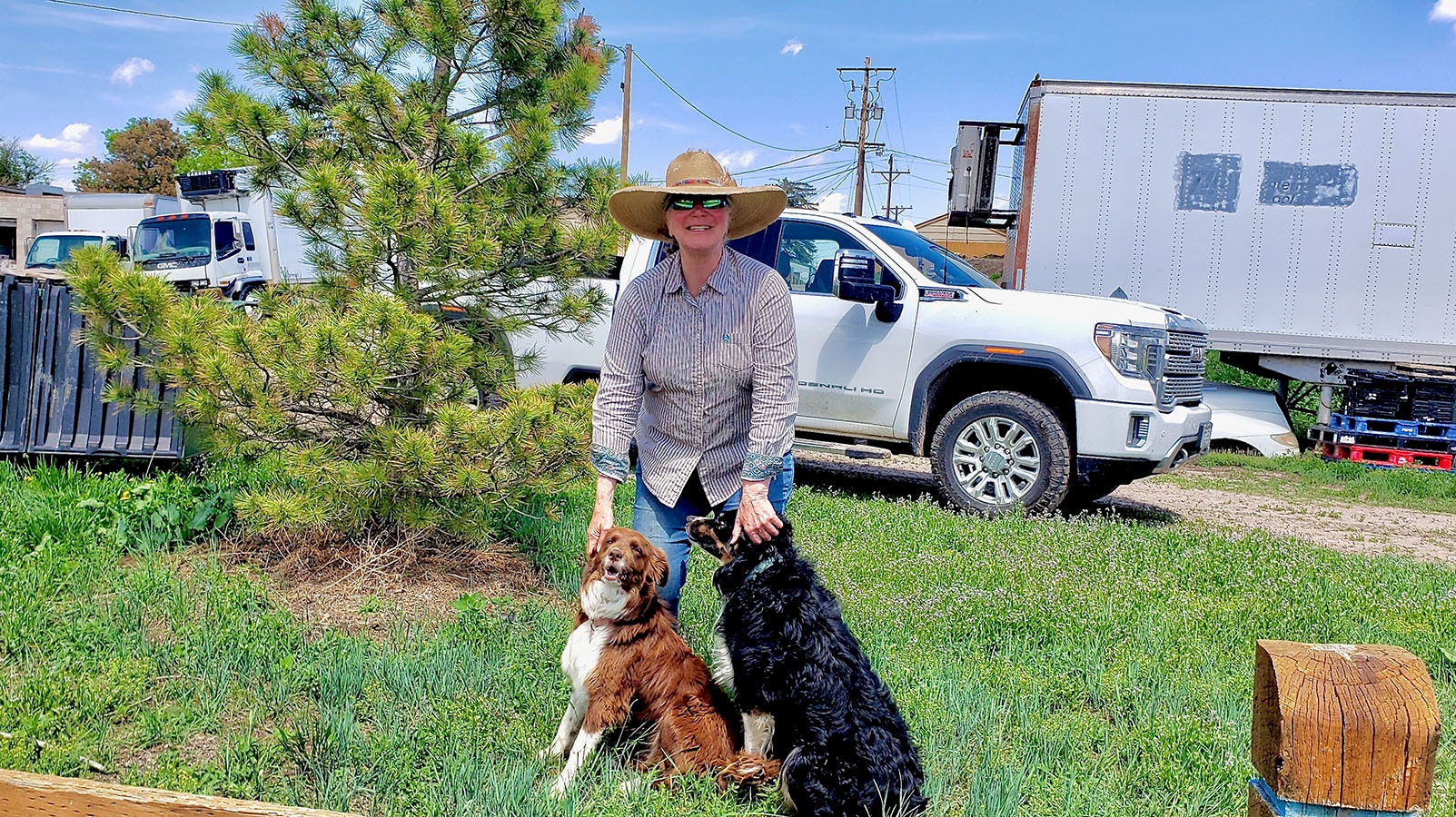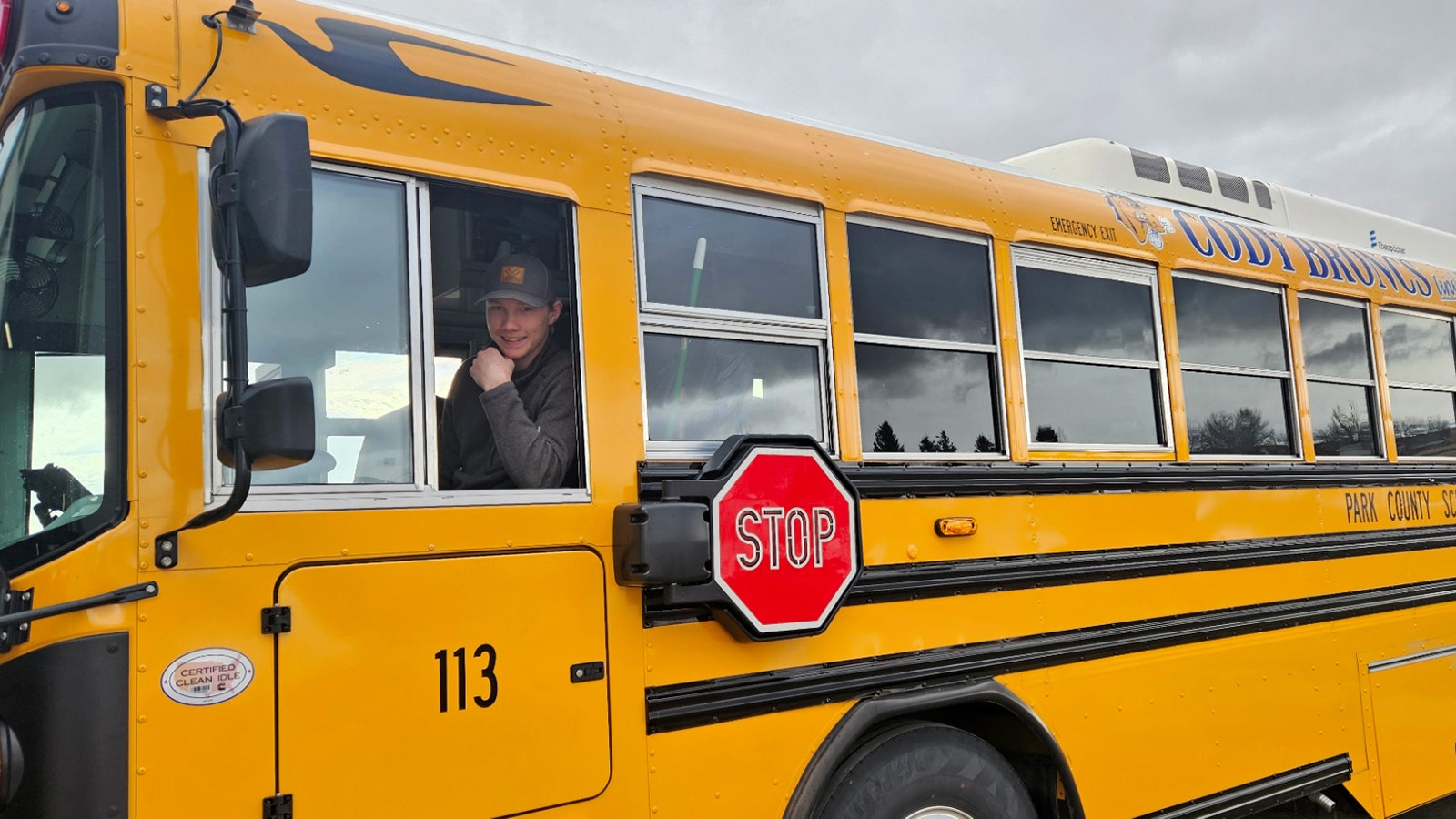Cheyenne is flush with hundreds of hillbillies, or gypsies if you prefer.
It’s not an invasion though. It’s a professional troupe of hungry goats, brought in to make the drainage ways safe for all mankind in Cheyenne.
Five hundred cashmere goats, to be exact.
They were brought in by a company called Goat Green to eat up all the weeds that love to grow along flood-prone areas like Crow Creek, an established FEMA flood hazard area.
“When you have vegetation in these drainage ways, they not only make the water rise, but it also slows down the water, which causes a ponding effect,” Cheyenne Construction Engineer Sam Berta told Cowboy State Daily. “That, too, will also make the levels rise, and so, to try to reduce the flood potential, we get in there with the goats and clean it out.”
Goats, as it happens, just love noxious weeds, Berta said, and will collectively — and happily — eat 1,000 pounds of vegetation each and every day for the 20 days they’re in Cheyenne.
It would take hundreds of man hours and/or gallons upon gallons of chemicals to control that many weeds without the goats, Berta said.
Having the goats is both cost-saving and environment-saving for the city.
“(The goats) may not do a perfect job,” he said. “But the goats — people love the goats, not only for the work they do, but there is just the enjoyment that the goats bring to the community.”
A Ranch Of The Traveling Kind
The 500 goats that came to Cheyenne were selected through a competitive bidding process, as required by law.
It just so happens that there aren’t many companies doing this kind of weed management. The city has had the same bidder year after year for the past 28 years — Goat Green, run by Lani Malmberg.
“I don’t have a ranch,” she told Cowboy State Daily. “I am a perfect gypsy.”
What Malmberg means by that is she and her gypsy goats travel from state to state and job to job throughout the year, never settling down anywhere for very long. Her goats are eating up weeds here and controlling fire hazards and erosion problems there in all 17 Western states ranging from Texas to California, and everywhere in between.
Malmberg, meanwhile, has even been to Hawaii to manage weeds and erosion problems there with her time-tested approach— though she left her cashmere goats behind for that and rented a herd instead.
“(The Hawaii goats) were wild and scary, and they didn’t behave like mine,” she added.
She much prefers her cashmere gypsies, which she’s worked with for the past 17 years. They have developed their own ways of communicating. A hand signal here, a turned body there, and maybe even a telepathically transmitted thought or two — or so it seems to Malmberg.
Two dogs, Roscoe and Banjo, assist her as well, and they also seem to have an uncanny rapport with their owner. She has but to look at the ground where she wants the dogs to sit, and they go right there and stay. They won’t jump into the cab of the truck until she says, “Go.”
They’re fine with friendly strangers petting them, but quick to look back to their mistress, just in case it’s time to go to work.
The only places Malmberg won’t go with her herd of goats and her assistant dogs are states that have water moccasins. That leaves out states like Missouri, where the poisonous snake is indigenous and relatively common in waterways of the kind where Malmberg’s goats are likely to do best.
Malmberg has bid for jobs on the East Coast though. So far, she and her traveling band of goats haven’t been chosen for any of those jobs.
“What’s biggest right now is fire mitigation,” she said. “We do a lot of work for BLM in fire mitigation and then mudslide prevention. A thousand goats is 4,000 hooves. So, imagine that many hooves packing the soil down.”
Weed Science A Happy Accident
Malmberg has a background in ranching. She grew up on a cattle ranch in Lander. But after her parents passed away, she needed a new gig.
“My brother got the ranch, and I got a suitcase,” she recalled. “So, I went and managed ranches for a while.”
After the ranch she was managing in Colorado was sold, she went to work in the oil field driving trucks.
“That got put out of business by a pipeline, but it qualified me to go to college for retraining,” she recalled.
She made a 4.0 during the retraining program, earning scholarships and a shot at a master’s degree.
There was just one problem. As a single mom, she really needed a program with a stipend. And weed science happened to be the only program that would offer her that.
“I’d never even heard of it, but I took it for the stipend,” she recalled.
The Cashmere Connection
The goats Malmberg uses are the same variety that produces cashmere, considered by many as the world’s softest, most luxurious wool.
That, too, is a bit of a happy accident, she told Cowboy State Daily.
She was managing two research projects at the time, her own on Russian knapweed and a second that she took over, which involved keeping sheep on 39 separate research plots. It had been a failure four years running.
“Nobody knew anything about animals, and so they all quit,” she said. “They couldn’t keep the animals in their pens. So, I volunteered to take that over. I knew how to handle animals and build the fence and run it.”
Her sons helped her with the sheep project, learning the Latin names of all the weeds along the way, as well as earning a small amount at minimum wage from the university. That helped the family make ends meet while mom finished her degree.
In the midst of all that, she happened to read an article about how well goats do at eating weeds. Then a woman she worked with told her about buying two cashmere goats.
“I said, ‘What do they look like? I’ve never seen them,’” Malmberg recalled.
The lady took her to see the herd, which ended with Malmberg buying up the entire herd of cashmere goats.
And that’s how Goat Green — and all the happy trails since then — began.
Cashing Out
Initially, Malmberg thought she would use the goats for weed management and sell their cashmere wool, which at the time was selling for a premium $20 an ounce.
But once shorn, the goats would have to be kept in a barn for 30 to 40 days — right in the middle of prime weed-eating time. That wasn’t going to work.
So, she and her boys tried hand-combing them one season. They hired several students to do the work, feeding them a hot meal and paying them above minimum wage. It was worth a bundle — and still made a profit despite all the expenses of hired labor.
But, given the storms and the head-on collision with weed season itself, it’s not something Malmberg has felt like repeating since.
“My passion is land management,” she said. “And for (cashmere) you’d really have to manage it for that. It’s a whole industry in and of itself.”
It’s something that’s there, though, if ever it’s needed, Malmberg said. A kind of insurance against hard times.
“I always said if diesel goes to $10 a gallon, then we’ll all start knitting,” she said, laughing.
But so far, that hasn’t happened, and Malmberg is glad of it.
Weed management is work enough for she and her son, Donnie, who will take over the business of running all the cashmere goats for weed management after she retires.
Until then, life’s been an adventure, and one happy trail has led to the next. Malmberg has loved it all along the way, 28 generations of cashmere goats later.
“You know, I used to think that I was managing the goats and doing all these jobs and everything,” she said. “But, in hindsight, after 28 years, I realize that these goats have led me on the wildest adventures that you could ever imagine.”
Contact Renée Jean at Renee@CowboyStateDaily.com

